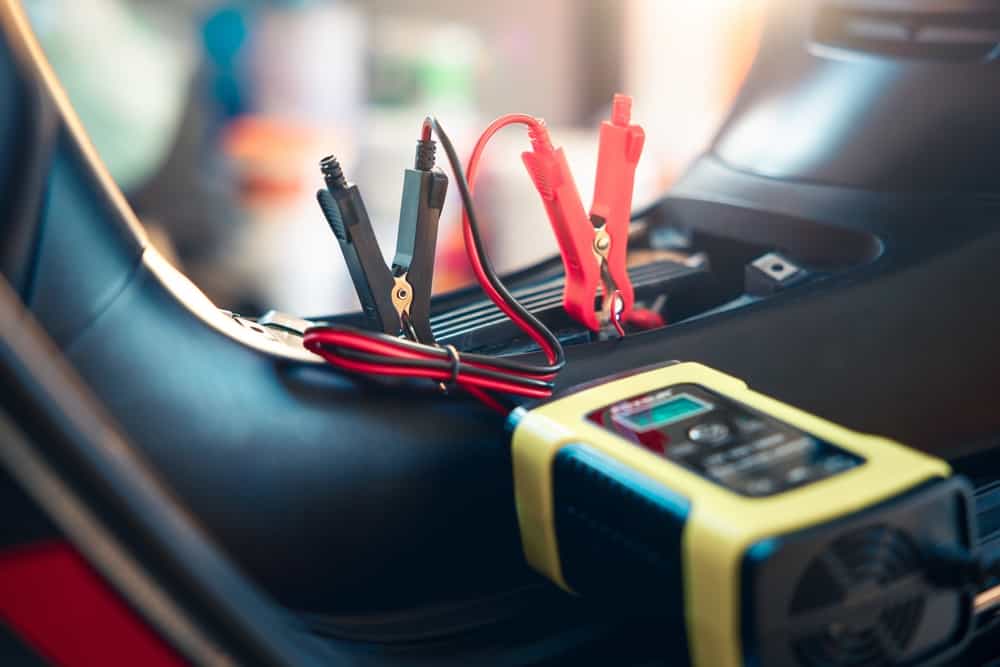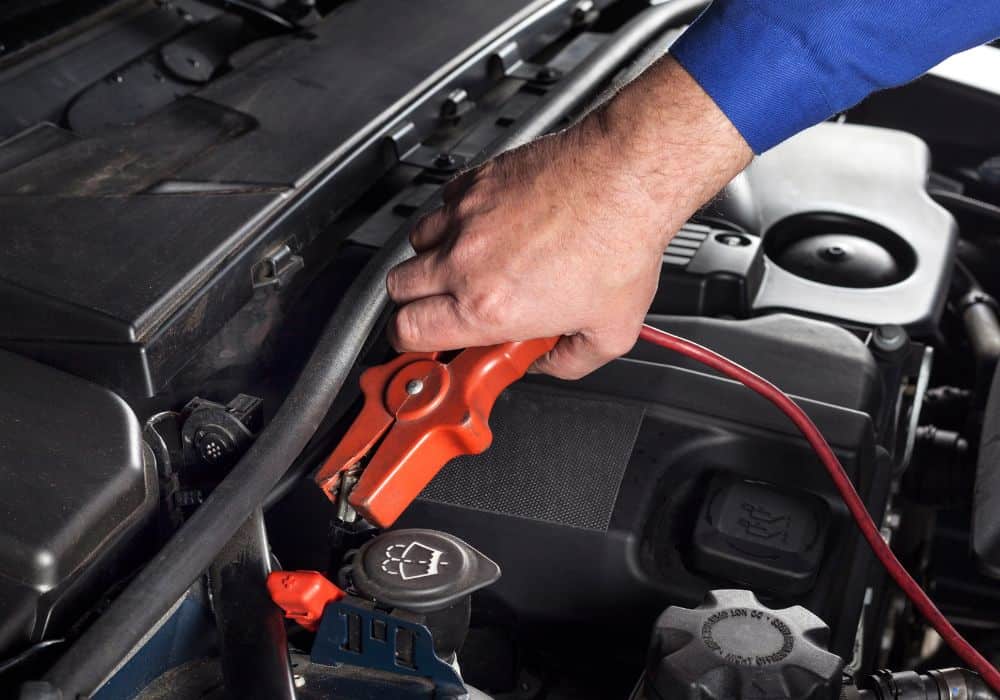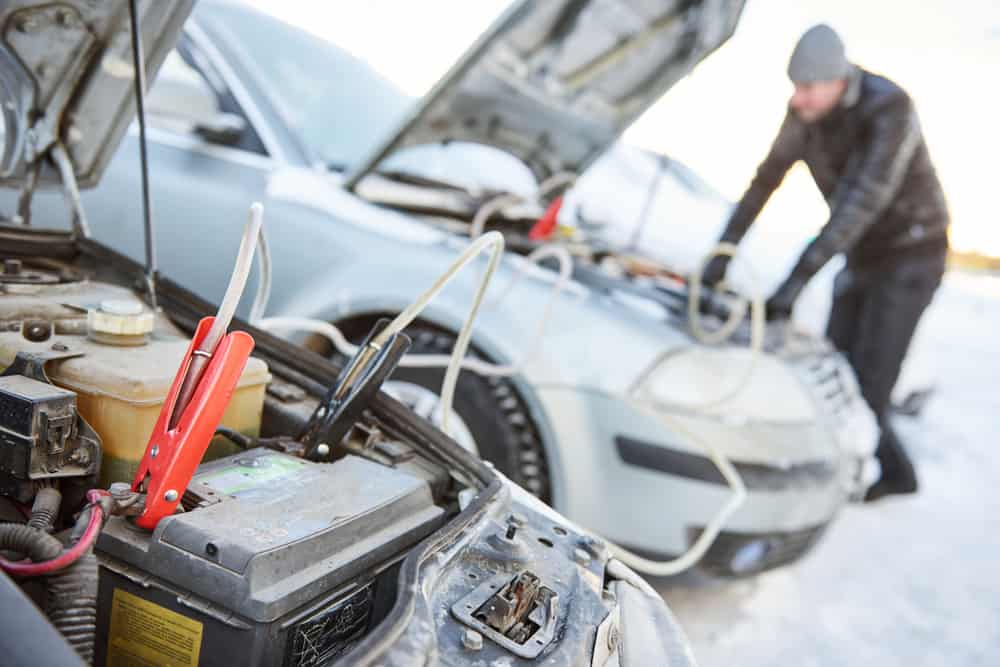Nothing can be more frustrating than getting everything ready for your trip, turning the ignition on – and nothing happens. A dead car battery is every driver’s worst nightmare.
But all nightmares end, and restarting your car isn’t as complicated as you might think. Even if you’re in the middle of nowhere with a dead battery and don’t have another car jumpstarting your vehicle, you can still get moving again!
In this article, we’ll go through step-by-step how you can restart your car without needing a secondary car battery. We suggest two methods to ensure that you will get on the move, whether you’re driving a manual or automatic.
We will also highlight some top tips on extending the life of your car battery, so you’ll get the most out of your car for years to come!
Table of Contents
First – diagnosing the problem

You need to figure out if the problem lies with your battery or the small motor found inside the car, known as the starter. Test your car’s electrical systems to see if they work as intended. Check that electric windows go up and down at regular speeds or when you turn on headlights and can reach the same brightness level you’d expect.
If either of the above examples fails, you have a battery problem. Open your car hood and inspect your battery for damage, leaks, or corrosion. Using a wire brush, gently clean the battery terminals and cables. This may remedy your problem entirely.
However, if your battery is relatively new, in good visible condition, and shows signs of a charge, the problem may be with your starter. This small motor spins the engine to start it and is powered by the battery. It may require a complete replacement to solve your problem.
Two ways to restart your car without another battery
Traditionally, people think you can only start a battery with the help of another car. But as our two methods below prove, there are many choices when restarting your battery. No matter your skill level, you’ll be able to start it without fuss.
Equipment
If your car battery still has problems post-cleaning, you may need to start it through other means. Below are standard equipment you will need:
- Non-conductive gloves
- Safety glasses
- Wire brush
- A friend or person for pushing
- Jumper cables
- Smartphone with a fully charged battery
1. Push start method
The push start method, also known as the pop method or bump start, uses momentum to jumpstart your battery into action. You may recognize this is the go-to method in TV shows and films, where cars have been stranded in the most isolated places.
Unfortunately, this method will only work with manual transmission cars. All you need is a short distance from the road with an incline. You’ll also need enough people to push the car to a slow speed or a tow truck to do the heavy lifting.
- Direct friends to the back of the car to begin pushing.
- Switch the ignition on with the parking brake engaged.
- Push your clutch into second gear – skip the first gear, which can cause your car to buck and jerk abruptly.
- Hop into the driver’s seat, press the brake pedal and release the parking brake. Have friends begin pushing.
- When speed picks up to 5 mph, release the brake. The car may jerk as the engine reengages itself.
- If this method fails, retry again but with a higher speed.
2. Jump Box method
A jump box is a small portable charger with jumper cables that allows you to repower your car battery without needing another car. They are handy for automatic transmission cars and have software designed to protect your car’s electrical system from voltage spikes.
You will need this charged before your drive. But once charged, jump boxes can easily last up to six months.
- Turn your car off and remove the key from the ignition. Also, ensure the jumper box is powered off until connected.
- Open up the car hood and locate the battery. Keep the jump box as far away from the battery as the cables allow.
- Check your car’s volts in its manual to ensure you match it accordingly to the jumper box.
- Connect the jump box cables, first to the positive and then to the negative terminals. Positive charger clamps are red, and negative ones are black. Avoid allowing positive and negative terminals to interact.
- Turn on your portable jump box, and then turn on your car.
- Try to start the car once every 2 to 3 minutes. Allow enough time between attempts to elapse.
- If your car does not start within 4 or 5 attempts, this indicates your battery needs replacement.
- If your engine successfully starts, turn the jumper off. Remove clamps and safety store the box. Let the vehicle stay idle (but on) for several minutes before driving it.
- Remember to recharge your jumper box when you get home!
Changing your car battery
Sometimes despite your best efforts, your car battery will fail to hold its charge and continuously die on you. At this point, you need to recognize that it’s time for a replacement.
On average, car batteries last between three to four years, depending on use and whether it has been well-cared for. Using a multimeter can check the current voltage of your car – a reading below 12.6 volts indicates your battery has degraded.
- Put on protective clothing and open your car hood up. Locate the positive and negative terminals.
- Disconnect the negative terminal first and then the positive, ensuring they do not touch any metal surface. This is to prevent a short from developing.
- Loosen fittings and clamps and gently remove the battery. Clean the surrounding area.
- To install your new battery, first, connect the positive terminal of your battery. Applying a small amount of grease can help establish a connection.
- Connect the negative terminal up, and use a socket wrench to tighten bolts, nuts, and clamps in place.
- Turn your ignition back on and perform a diagnostic, including the multimeter test again. Your car should score a higher voltage than before with its new battery.
Safety
Never compromise your own safety, especially when the car hood is open, and you operate with potentially damaged batteries and cables. If you don’t have protective gear, wait until you source them before beginning.
This is because faulty electrics, including a potentially damaged battery, can be pretty hazardous to your health and safety. Ensure there is nothing flammable nearby, remove jewelry and watches, and tie up loose hair before leaning over your battery.
Finally, if friends are helping with pushing and pulling your car, ensure everyone is aware of their role and does not put themselves in harm’s way when the vehicle is in momentum.
Expert Tips:

- A jump start box is a portable battery with jumper cables. It helps prevent voltage spikes that damage your car’s electricity and hardware.
- Remember to recharge jump boxes periodically – they can hold their power for up to six months!
- Repair any corrosion you notice in the surrounding area of the car. Regularly cleaning the battery’s terminals and components, including the ends of the cable, of debris will ensure it lasts for as long as possible.
- Check your insurance card – roadside assistance like a tow truck or AAA assistance may already be included in your coverage.
- A battery in good health should be able to power windows, AC, or headlights. If you notice any weakness in speed or brightness, your battery may be beyond repair and needs replacement promptly.
- If you’re unsure about the validity of your battery, visit a qualified mechanic to perform a formal diagnostic test.
Conclusion
A car that fails to start is a frustrating thing to happen to anyone. And no doubt it will happen at an inconvenient time when you need to get to a place asap. Typical, right?
But as our article shows, you can easily restart your weak car battery no matter the circumstance. Whether driving a manual or automatic car, you can use a few pieces of equipment and manpower to recharge your battery – without needing a second one to charge it!
That said, it’s always essential you perform regular maintenance of your battery and replace it relative to your manufacturer’s instructions. And as always, ensure any chargers and jump boxes are themselves charged up in case of a breakdown.
If you have questions about restarting your car without a battery, please post a comment below.
But when in doubt, remember:
- Car batteries last, on average, three to four years. Consistent failing is a tell-tale sign you need a battery replacement.
- The push method is only suitable for manual cars that can change gears. If driving an automatic, consider a jump box to restore your battery.
- If in doubt, contact a professional. Most insurance coverage includes breakdown assistance and can advise the most appropriate solution for you to try.
